How D. Gray-man Challenges Readers to Look Deeper
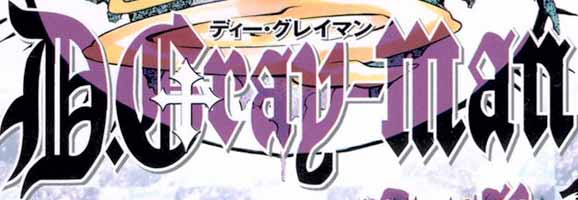
In Katsura Hoshino’s D. Gray-man, nearly every character with a name is at some point misunderstood or underestimated. On one level, the akuma make it difficult to know who is the suspect and who is the victim, but on another, readers are likely to judge regular characters based off of a false premise.
The main conflict of D. Gray-man surrounds the Millennium Earl, a wicked entity who tricks the desperate into trapping their dead loved ones on the earth as akuma, weapons that easily pass for living humans. This conman is racing the exorcists of the Black Order in the collection of a powerful material called Innocence that will determine the fate of the world. Protagonist Allen Walker is devoted to bringing salvation to the akuma, who have no choice but to serve the Earl’s bidding. Because they reanimate corpses and blend in with the masses, the average person is deceived by the akuma, discovering the danger only when it is too late. Allen’s “curse” grants him the ability penetrate the disguise and see the tormented faces of chained spirits. When Allen’s unparalleled perception is missing from a scene, however, reality sets in: that no reader has his spiritual X-ray vision that can expose the truth about others. No one can look with their eyes to know the depths of another’s soul. The true message, then, is not that evil can be anywhere, but that people must be aware of their natural tendency to trust their conclusions, and to recognize that perception is anything but infallible.
I will focus on characters introduced within the first three books who are brilliantly drawn and brought to life as being grotesque, ridiculed, or self-loathing–characters who are more than what they first appear to be. D. Gray-man seems to purposefully mislead the reader in this regard, designing a repulsive or deceptive outer layer to test him or her and expose them to their own biases. Most errors of judgment are the direct result of drawing conclusion before hearing the other side of a story, while others are formed by following false assumptions. John, for instance, is too young to know what he is talking about. Allen is too scrawny to be a hero. Guzol is a doll that lures children like Lala from their homes. Miranda is an undesirable who can only bring bad luck. The akuma mislead with malicious intentions, but these others are the victims of prejudice. By disguising the goodness in people, D. Gray-man punishes assumption, and rewards the search for truth. Eventually, readers begin to anticipate the deeper dimensions beyond each character’s superficial qualities.
John
The classic case of “The Boy who Cried Wolf” is what comes to mind when adult men crowd around and shake their heads at the little kid screaming, “It’s an akuma! It’s an akuma! It’s going to kill us!” (Hoshino 68). The difference, however, is that this boy calls for help in a truly dire situation, and is dismissed as a prankster in the very presence of the wolf. The truth of the boy’s cries is overwritten by the low opinion of him. He looks like a nuisance, and the wolf looks like a sheep, so the problem would have been completely ignored had Allen not taken the cries seriously and come running.
Allen Walker
Allen does not fit the picture of superhero. “Scrawny”, with a deformed arm, white hair, and a curse, Allen can’t seem to go anywhere without being judged and underestimated. Even though Allen exorcises the akuma that John reports, John turns around and subjects Allen to criticism. He isn’t impressed by his savior, because Allen Walker does not match the exorcist stereotype. Allen feels the pang of insult but his maturity allows him to quickly shake it off as unimportant. It’s true that he makes exorcism look easy, but the reader knows better than to underestimate his competency. It isn’t until Allen finally makes it to the Black Order Head Quarters that we see him vertically balancing himself on a tilting chair, supported by only his thumb until sunrise, and know the extent of his self-discipline. But strength isn’t about showing off to Allen. It’s about protecting people successfully.
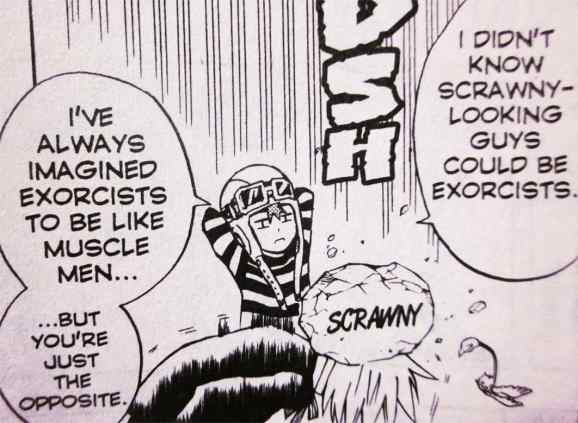
Even gaining acceptance into the headquarters proves an ordeal for Allen. What should be a place of refuge, turns into the spawning ground of a deadly misunderstanding when he approaches the front gate. Allen’s curse inconveniently makes it impossible for the gatekeeper to see whether or not an akuma’s mechanical skeleton is lurking below his skin. The curse itself is enough to set off alarm bells. Right when the blade of a fellow exorcist Kanda is about to pierce Allen’s throat, the mistake is discovered. The gatekeeper replies to criticism helplessly with, “But well, you know! How am I supposed to tell (that he’s an exorcist) if I can’t see his insides?” (Hoshino 146). The protocol becomes, “when in doubt, attack,” rather than, “seek the truth by listening to the other side of the story.”
Guzol and Lala
Guzol is supposed to be an ugly doll that kidnaps stray children and has survived for 500+ years thanks to the power of the Innocence. This is the conclusion that Kanda and others have come to while reviewing the ghost story of Mater. Allen is new to the concept of Innocence, and the phenomena it can inspire. He accepts Kanda’s explanation as an interesting possibility but he does not commit himself to it. The reader, on the other hand, is in the obligatory position of accepting possibility as fact because, ever since reaching headquarters, Allen has not been the most experienced of the two exorcists featured in one panel.
When the reader first sees Guzol and Lala, Lala looks like the one who was lured, not the other way around. Since Lala says things like “you’re the only one who accepted me” the reader becomes more convinced still that she is the runaway with whom Guzol has bonded (Hoshino 228). This is all cleverly built upon the initial assumption that Guzol is the one who was abandoned in Mater. To protect Lala, Guzol even perpetuates this false premise. Allen and Kanda have come for the Innocence, and this they know to be in the heart of a doll. Kanda is surprised when Guzol can talk, as though he was hoping this would be a simple matter of removing apart from a toy, not a question of ethics.
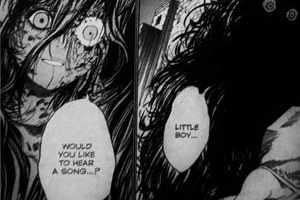
Lala, the real doll, acts like a living being and speaks just as well as anyone else, but Kanda doesn’t want to listen. When Allen actually lets Lala open up to him, however, he discovers the truth— that Guzol was once a little boy, rejected by the world for his ugly face. He was the only one who accepted Lala, because everyone else was too afraid of her mangled hair and broken eye to listen to her sing. The frightening “Ghost of Mater” killed, but killed in self-defense. Guzol was not lured, but abandoned. They were misfits, forced to live isolated from the world because they could only find acceptance through each other.
Miranda Lotto
Miranda Lotto is another rejected character who finds unlikely fellowship. The one in whom she sees herself, however, is not a person….it’s a clock. Like this clock, Miranda is no stranger to having others give up on her and being regarded as broken. Miranda is embarrassed when Allen’s partner during this mission, Lenalee, notices the charm dangling from Miranda’s necklace, as though she has been teased about it before. It is the clock spring with which she was able to coax a “useless” grandfather clock back to life. “Y…You must think it’s stupid of me to carry this around with me…” Miranda says, turning her back and blushing (Hoshino 449). She fears she will be judged again. It’s Lenalee’s open mind that allows Miranda to feel comfortable enough to be herself.
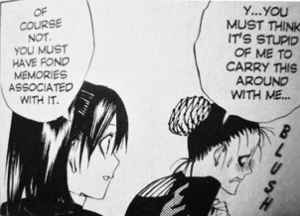 Miranda has allowed the negative opinions of others to define her. From the artwork alone, the reader is ready to judge her as being a crazy old maid. Heavy shadows fall under her eyes, and a variety of gloomy and frenetic expressions rule her face. She isn’t crazy though, even if she does have a tendency of talking to herself, because she is the only one in town who is aware that they are actually stuck in a Groundhog’s-Day-type time loop. She talks to herself because this awareness means that she is also the only one who understands what it is like to relive the same day thirty times. Miranda’s understanding of her pain is not the same as the knowledge of who she is, though. “I really don’t know anything…This city became strange on its own. Why should I be targeted? What have I done…? I hate this…I hate everything…” Miranda mumbles as she cleans her beloved clock (Hoshino 454). She has grown up with low self-esteem because no one acknowledges her effort or gives her a word of praise. Her peers ignored her when she was a child, and as an adult she is scorned by children and by adults alike, just because she is clumsy and nothing seems to come easily to her.
Miranda has allowed the negative opinions of others to define her. From the artwork alone, the reader is ready to judge her as being a crazy old maid. Heavy shadows fall under her eyes, and a variety of gloomy and frenetic expressions rule her face. She isn’t crazy though, even if she does have a tendency of talking to herself, because she is the only one in town who is aware that they are actually stuck in a Groundhog’s-Day-type time loop. She talks to herself because this awareness means that she is also the only one who understands what it is like to relive the same day thirty times. Miranda’s understanding of her pain is not the same as the knowledge of who she is, though. “I really don’t know anything…This city became strange on its own. Why should I be targeted? What have I done…? I hate this…I hate everything…” Miranda mumbles as she cleans her beloved clock (Hoshino 454). She has grown up with low self-esteem because no one acknowledges her effort or gives her a word of praise. Her peers ignored her when she was a child, and as an adult she is scorned by children and by adults alike, just because she is clumsy and nothing seems to come easily to her.
So, is it exactly as the townspeople have led her to think—that she can never do anything, no matter how hard she tries, and that she is a bringer of bad luck? Or, does it have something to do with her lack of confidence, and that failure has resulted in a never-ending cycle of discouragement? No one has ever looked deeper into her soul to acknowledge that her determination is admirable, or even had the decency to thank her for anything. In the end, she realizes that she is not different and weird, but that her connection with the clock is a special connection to Innocence. Like everyone, she has always had strengths lying dormant within her, and now she has found herself. On the last page of the third book, Miranda is hardly recognizable as the same dreary woman we met at the beginning. She has let her hair down, she is smiling, and she walks with her head held high. It’s not that she suddenly changes her mind, and decides to improve her outlook on life, it’s that Allen and Lenalee accepted her as herself and gave her the opportunity and fresh perspective she needed to make a difference.
Bringing Them all Together
The reader is more likely to side with John than the ignorant crowd of adults, but it is scary how tempting it is to judge characters based on popular opinion. When readers hear the Ghost of Mater legend from an informed and experienced exorcist like Kanda, we forget that he is simply interpreting an old story based on the hearsay of others’ superstitions. It is not enough to blame him for feeding the reader and Allen false information. After the truth comes out about Guzol and Lala, the reader is called upon to empathize with their tragedy and to withhold judgment in the future to avoid repeating this mistake. Lala and Guzol defended their right to live, but other characters, however, don’t even know their own worth. When Miranda opens up, for instance, she claims that she was so depressed she had considered suicide. Like anyone, she doesn’t know what the future holds, and she is still on the path of self-discovery. Her challenge was to move forward, hence the reason why she invoked the innocence to bring time to a halt and kept reliving the same day. These are only a few examples of how D. Grey-man sets us up to question our assumptions. Eventually, the scenarios in which characters are underestimated add up, and one begins to rightfully question the “obvious.”
Works Cited
Hoshino, Katsura. D. Gray-man. Omnibus ed. Vol. 1-2-3. San Francisco, CA: Viz Media, 2013. Print.
What do you think? Leave a comment.
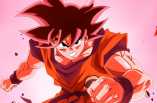




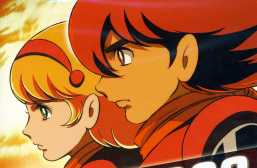

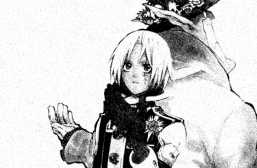

The wait for new issue is killing me. I don’t care anymore, I am never giving up on DGM, even if I have to wait 10 years damn it. I hope Hoshino finds a publisher soon or moves to Korea and start using Naver to upload.
at ease guys I just found out that the author us continuing it right this moment look for the the account of hoshino katsura on instagram picture showing shes on the process of drawing it is shown
This is such great news that I had to reply even if this comment was posted 8 months ago. I heard that there was a dispute with the publisher? I hope this manga gets continued though. This was one of my favourites before it was discontinued.
Being that I am a fine artist, I find the visuals exceptional in this manga.
Yeah, the illustrations are decidedly expressive, even for a manga.
okay i really like this manga but that was before i read this books because well my brother got a interest on it and well since i didn’t have much to do at home i pick this manga from his shelf of books and i read it i liked it from the beginning and all but there was something unbalance for me i don’t expect everyone to agree on me but when the other characters start popping out they were actually confusing me in some way they are cool and its a fighting manga and all and i like the supernatural but there is something weird and i cant get my head straight on it maybe i should had continue reading it and maybe it would helped me understand it more but i stop cause my head was hurting just trying to figure out all the characters and why they are there…
Great essay! D.Gray-Man is an outstanding manga with great action, strong story, and fun laughs. The thing about it is that it has believable slapstick and not comedy where the victim gets hit with something that would kill them normally. This is a very good change and is backed by a solid story.
i would say fairy tail is alot better and sois one piece
Excellently written article.
I had bloody *adored* D.Gray Man, with ‘had’ being the operative word, of course. D. Gray Man, when I first started reading it, quickly became something I could just spend hours at my table reading with absolute glee. The art was gorgeous, the concept was just amazing and it even had that dark edge that I often craved for in some other mangas. Had it continued this way, it would definitely have become something greater.
But then the first hiatus came, and it was all downhill from there.
The art, though still brilliant, just couldn’t carry the rest of D. Gray Man’s (newly) horrible plot through, and I was left sorely disappointed at this new D. Gray Man, scowling at the screen and no longer enjoying the manga after I saw the new changes.
What is wrong with you the plot up till the newest chapter (218) is fantastic. When did you think it dropped off??
There is definitely more to this manga than what is presented at the surface, you detail this well. I must say I love how eccentric it is, how clever, how very awesome!
DGM is relatively similar to Tite Kubo but very different. Totally worth exploring.
I never thought of that. They both involve death and stuff but there’s also a couple other crossover themes. Bleach’s new art style is somewhat similar as well. Super cool comparison. I’m gonna be thinking about that for a while.
I love this manga so much. Katsura is incredible to be able to create such a beautiful story.
It leaves you questioning whether the villain is actually the villain. Making you weigh good and bad.
I think you’ve brought up some interesting ideas. However… I think the first couple books, particularly everything before the Miranda’s story are some of the most black and white arcs in the series. I mean the idea that characters have “hidden depth” isn’t exactly a rare trope. The “scrawny hero” is, I think, one of the most fundamental tropes to fiction.
One character that I would really like to hear your opinion about is Road. Since you limited yourself to the first couple of stories, I’ll refrain from asking your views on some of the other revelations about the nature of the characters, but Road is still with in the scope of your analysis. What is in Road that we can see if we look deeper do you think?
I have yet to actually pick up D-Gray Man and give it a go. After reading this article, I might re-think about that decision.
You should read it it’s great. The story keeps on getting better and better, just be prepared to wait long periods for chapters
Some great points are made, but another thing to consider is the urgency of the exorcists’ situation, which becomes much more apparent in later volumes. You mentioned this briefly with the example of Kanda and his black and white policy when dealing with the enemy, but never really developed a strong argument for his side. In this world, exorcists can’t trust the Order, let alone the outside world, because the seeds of the Millennium Earl are sowed everywhere. When pauses happen in the manga, they are short and bittersweet because of the constant sense of doom and dread. The next battle is inescapable. The conflict will never end.
If you think it challenges readers to look deeper now, wait ’til the later volumes, when they start dropping twist bombs on the Earl and the Exorcists. I don’t even know what right is anymore…except that it is across from left.
I was deeply sadden that the manga ended. I felt they were doing so well with it and I wanted to see the character development for the Noahs. D.grayman did cause me to believe the whismical story of how they came to be and it really touched my heart some of the stories
It hasn’t ended. It’s currently on hiatus, but it will continue sometime in the next few months.
Im not sure if it really ended… many, like me are still hoping this manga will be back. Im sure alot of people will be very happy.
It’s in hiatus until further notice. The author has taken a break to write a one shot, and has also worked on some character designs for an anime. I’m thinking it’ll be back by December- summer 2015.
I liked how you looked a lot deeper into the subject than most readers of this manga could. I was well organized and well supported. I only watched the first two episodes of DGM and I honestly would never have thought to look at this from this perspective. I hope you’re able to do a sequel to the rest of this once you discover more characters in the series.
D. Gray Man is an excellent manga because all of its characters are flawed, and we as the readers cannot help but love them, even if they are supposed to be evil. You make some good examples, but I think any character in D. Gray Man can be studied further for deeper analysis. Hopefully Hoshino-sensei will be able to continue the manga soon so we can discover more about our favorite characters!
Interesting article. I wonder how you picked which characters you were going to write about. I think Katsura-sensei had intended for D.Grayman to explore gray areas throughout. Even the concept of the main villains group “Noah” descendents and with Allen being part of their group. The anti-akuma device that makes the exorcist coincidentally make the parasite-type exorcist monsters (Alen with a deformed hand, Crowley with fangs). I think this article just skimmed the surface of the manga, but I think it’s great nonetheless.
Good article, really showed the depth that D.Greyman has in both its story and characters.
for some reason this reminds me of death note
A good article with nice in-depth looks into each addressed character, but there is a typo in the last sentence and there is a “to” missing early on.
There are real vibes of “don’t judge a book by its cover.”